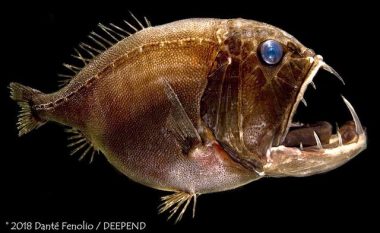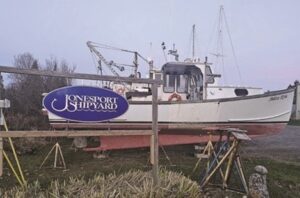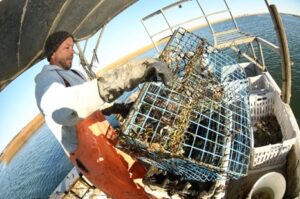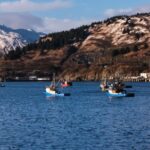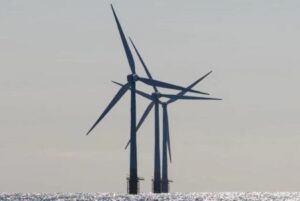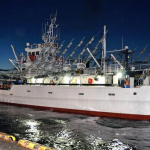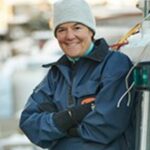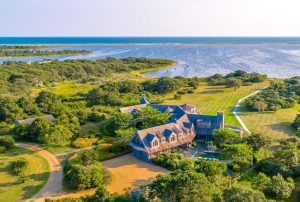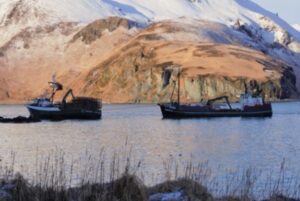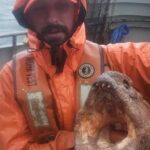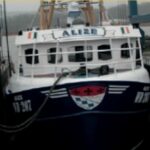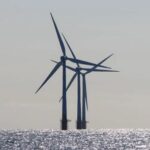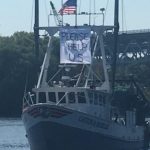Tag Archives: “scientists”
$2M to give more ocean information to fishers, scientists. ‘It will make a difference.’
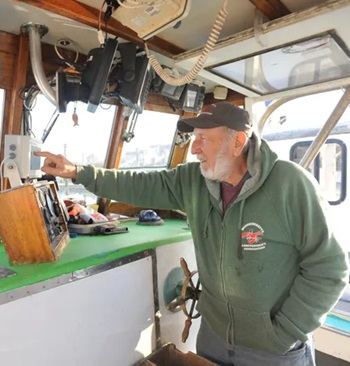 A $2 million dollar grant aimed at beefing up collaboration between commercial fishermen and scientists was announced in late October at an event in Sandwich. The money will put 450 more sensors on commercial fishing equipment and data monitors on 150 more commercial fishing vessels. David Casoni has been fishing for 50 years. His lobster boat, Margaret M, is docked at Sandwich Marina. He has hundreds of lobster traps in Cape Cod Bay. He’s placed most of them based on historic knowledge. “We’re trying to catch an animal that has virtually no brain and it’s outsmarting us,” he said. “We know it reacts to food, pheromones, and somewhat to temperature, but it’s not consistent.” more, >>CLICK TO READ<< 08:03
A $2 million dollar grant aimed at beefing up collaboration between commercial fishermen and scientists was announced in late October at an event in Sandwich. The money will put 450 more sensors on commercial fishing equipment and data monitors on 150 more commercial fishing vessels. David Casoni has been fishing for 50 years. His lobster boat, Margaret M, is docked at Sandwich Marina. He has hundreds of lobster traps in Cape Cod Bay. He’s placed most of them based on historic knowledge. “We’re trying to catch an animal that has virtually no brain and it’s outsmarting us,” he said. “We know it reacts to food, pheromones, and somewhat to temperature, but it’s not consistent.” more, >>CLICK TO READ<< 08:03
On US coast, wind power foes embrace ‘Save the Whales’ argument
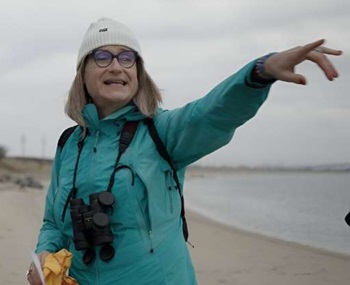 Whether from real concern for marine animals or doubts about renewable energy, the anti-wind power movement has been growing along the US East Coast, with some trying to blame a surge in whale strandings on the growth of offshore energy projects. Their attempt to link the two seems to be resonating, despite what scientists say is a clear lack of evidence. When Lauren Brandkamp and her team from the nonprofit Whale and Dolphin Conservation organization in Massachusetts carry out a rescue on an area beach, one of the first questions bystanders ask is: “Was this wind?” Wind power critics have organized coastal town gatherings, posted “Save the Whales” signs and filed lawsuits in a bid to bury new wind projects under crushing litigation fees. A recent surge in whale strandings or deaths has given them added ammunition. Photos, more, >>CLICK TO READ<< 08:41
Whether from real concern for marine animals or doubts about renewable energy, the anti-wind power movement has been growing along the US East Coast, with some trying to blame a surge in whale strandings on the growth of offshore energy projects. Their attempt to link the two seems to be resonating, despite what scientists say is a clear lack of evidence. When Lauren Brandkamp and her team from the nonprofit Whale and Dolphin Conservation organization in Massachusetts carry out a rescue on an area beach, one of the first questions bystanders ask is: “Was this wind?” Wind power critics have organized coastal town gatherings, posted “Save the Whales” signs and filed lawsuits in a bid to bury new wind projects under crushing litigation fees. A recent surge in whale strandings or deaths has given them added ammunition. Photos, more, >>CLICK TO READ<< 08:41
Scientists plan climate engineering experiment in ocean off Cape Cod
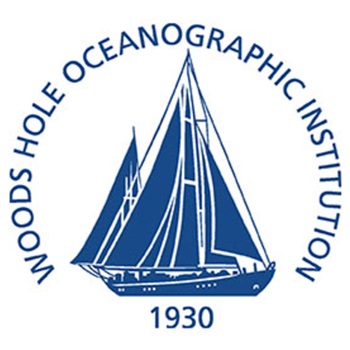 Scientists from the Woods Hole Oceanographic Institution are seeking a federal permit to experiment in the waters off Cape Cod and see if tweaking the ocean’s chemistry could help slow climate change. If the project moves forward, it will likely be the first ocean field test of this technology in the U.S. But the plan faces resistance from both environmentalists and the commercial fishing industry. The scientists want to disperse 6,600 gallons of sodium hydroxide — a strong base — into the ocean about 10 miles south of Martha’s Vineyard. Groups including the Stellwagen Bank Charter Boat Association, the Massachusetts Lobstermen’s Association and the Maine Department of Marine Resources have expressed concerns about, or outright opposition to the project. more, >>CLICK TO READ<< 09:52
Scientists from the Woods Hole Oceanographic Institution are seeking a federal permit to experiment in the waters off Cape Cod and see if tweaking the ocean’s chemistry could help slow climate change. If the project moves forward, it will likely be the first ocean field test of this technology in the U.S. But the plan faces resistance from both environmentalists and the commercial fishing industry. The scientists want to disperse 6,600 gallons of sodium hydroxide — a strong base — into the ocean about 10 miles south of Martha’s Vineyard. Groups including the Stellwagen Bank Charter Boat Association, the Massachusetts Lobstermen’s Association and the Maine Department of Marine Resources have expressed concerns about, or outright opposition to the project. more, >>CLICK TO READ<< 09:52
Lobstermen and Scientists See a Fishery in Flux
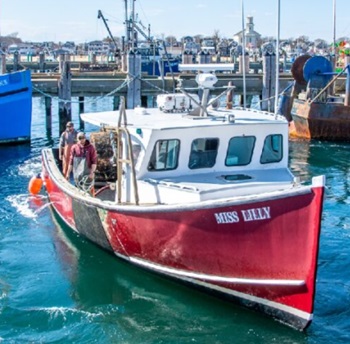 While overall the fishery seems stable, some lobstermen are seeing changes that have them worried about its future. Scientists are looking into what role the changing climate may be playing in those changes, but they don’t have definitive answers. “It’s horrible,” said Mike Rego, a lobsterman and owner of the F/V Miss Lilly who operates out of Provincetown. “Last year was the worst year I ever had.” Dana Pazolt, another Provincetown lobsterman who owns the F/V Black Sheep, said that the last four years have been slim for lobsters around the Outer Cape. “You’ve got to hunt for them,” he said. “I can’t tell you why that is.” The surface waters of the Gulf of Maine are warming at a rate of about one degree per decade, faster than 99 percent of the world’s oceans, according to the Gulf of Maine Research Institute. Meanwhile, in other areas, warming has already had an effect — it played a major role in causing the collapse of the lobster fishery in Long Island Sound in 1999. more, >>CICK TO READ<< 21:20
While overall the fishery seems stable, some lobstermen are seeing changes that have them worried about its future. Scientists are looking into what role the changing climate may be playing in those changes, but they don’t have definitive answers. “It’s horrible,” said Mike Rego, a lobsterman and owner of the F/V Miss Lilly who operates out of Provincetown. “Last year was the worst year I ever had.” Dana Pazolt, another Provincetown lobsterman who owns the F/V Black Sheep, said that the last four years have been slim for lobsters around the Outer Cape. “You’ve got to hunt for them,” he said. “I can’t tell you why that is.” The surface waters of the Gulf of Maine are warming at a rate of about one degree per decade, faster than 99 percent of the world’s oceans, according to the Gulf of Maine Research Institute. Meanwhile, in other areas, warming has already had an effect — it played a major role in causing the collapse of the lobster fishery in Long Island Sound in 1999. more, >>CICK TO READ<< 21:20
Warming Waters Heat Summer’s Feast Well Before It Gets to the Kitchen
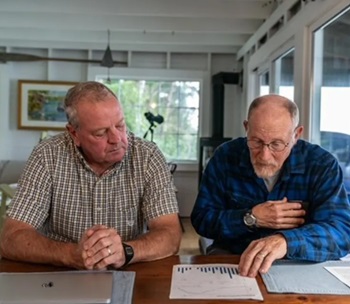 An ever-warming planet is playing havoc with the intricately interconnected web of marine life. Just as climate has long stressed human populations and driven migration, marine populations are stressed and in search of survivable climates too. In New England, scientists and lobstermen alike are studying and living the impacts. Tim Alley has been lobstering in Maine’s coastal waters for 40 years. “There’s been a trend in recent years related to temperatures,” he says. Alley is steeped in the traditions of his home state’s biggest industry and recently dusted off a short film from 1972 in which he starred at age 12, “Alone in My Lobster Boat,” filmed in South Bristol and New Harbor, Maine. Like most lobstermen, he would call himself an environmentalist: they live on the water, they live from the water, they thrive on the water. But they reject the notion that a species – the right whale – is failing because of them. Over 40 years, he says, he has seen exactly one right whale. Photos, Video, more, >>CLICK TO READ<< 14:50
An ever-warming planet is playing havoc with the intricately interconnected web of marine life. Just as climate has long stressed human populations and driven migration, marine populations are stressed and in search of survivable climates too. In New England, scientists and lobstermen alike are studying and living the impacts. Tim Alley has been lobstering in Maine’s coastal waters for 40 years. “There’s been a trend in recent years related to temperatures,” he says. Alley is steeped in the traditions of his home state’s biggest industry and recently dusted off a short film from 1972 in which he starred at age 12, “Alone in My Lobster Boat,” filmed in South Bristol and New Harbor, Maine. Like most lobstermen, he would call himself an environmentalist: they live on the water, they live from the water, they thrive on the water. But they reject the notion that a species – the right whale – is failing because of them. Over 40 years, he says, he has seen exactly one right whale. Photos, Video, more, >>CLICK TO READ<< 14:50
Scientists at Work: Uncovering the Mystery of When and Where Sharks Give Birth
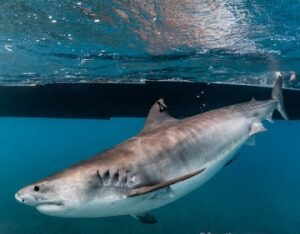 If you have a toddler, or if you encountered one in the last year, you’ve almost certainly experienced the “Baby Shark” song. Somehow, every kid seems to know this song, but scientists actually know very little about where and when sharks give birth. The origins of these famous baby sharks are still largely a mystery. Many of the large iconic shark species – like great whites, hammerheads, blue sharks and tiger sharks – cross hundreds or thousands of miles of ocean every year. Because they’re so wide-ranging, much of sharks’ lives, including their reproductive habits, remains a secret. Scientists have struggled to figure out precisely where and how often sharks mate, the length of their gestation, and many aspects of the birthing process. >click to read< 13:51
If you have a toddler, or if you encountered one in the last year, you’ve almost certainly experienced the “Baby Shark” song. Somehow, every kid seems to know this song, but scientists actually know very little about where and when sharks give birth. The origins of these famous baby sharks are still largely a mystery. Many of the large iconic shark species – like great whites, hammerheads, blue sharks and tiger sharks – cross hundreds or thousands of miles of ocean every year. Because they’re so wide-ranging, much of sharks’ lives, including their reproductive habits, remains a secret. Scientists have struggled to figure out precisely where and how often sharks mate, the length of their gestation, and many aspects of the birthing process. >click to read< 13:51
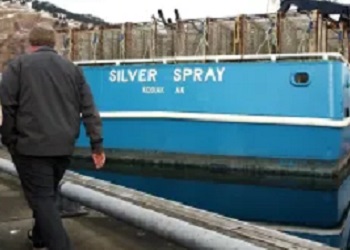
10 billion snow crabs disappeared from the Bering Sea. Scientists and fishermen are working together to understand why
The snow crabs’ population in the Bering Sea off the western coast of Alaska has fluctuated for decades. An increase in young crabs back in 2018 gave way to optimism that fishing would be good for years to come, but the hope was short-lived. Gabriel Prout and his family own the fishing vessel Silver Spray in Kodiak, Alaska. He said it was obvious something was wrong the last few years. The Bering Sea fishing grounds are usually covered in sea ice in the winter. But there wasn’t much ice, and they fished further north than usual. Finding snow crabs was still difficult. “It was just very poor fishing,” said Prout. “We searched for miles and miles and miles and really didn’t see anything.” >click to read< 10:15
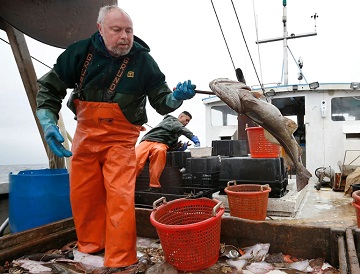
Are cod ‘severely depleted’ in the Gulf of Maine? Fishermen, scientists view ocean depths differently
When fishermen and women look at the gray Atlantic waters off New England, they see a marine environment literally swimming with cod, the popular white fish prized around the world for its mild flavor. Scientists, on the other hand, say Atlantic cod stocks in the Gulf of Maine are severely depleted and possibly vulnerable to extinction. The question of how fishermen and marine scientists employed by government agencies can view cod numbers so differently has puzzled Micah Dean, a marine biologist with the state of Massachusetts, for years. While a doctoral student at Northeastern University, Dean believed he came up with an answer. >click to read< 19:00
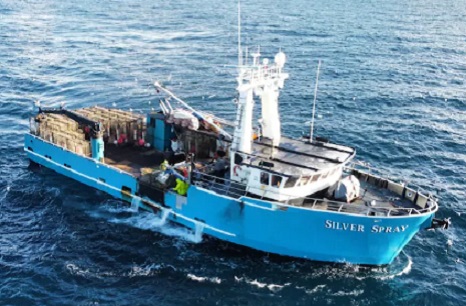
Alaska’s snow crabs have disappeared. Where they went is a mystery.
Gabriel Prout and his brothers Sterling and Ashlan were blindsided. Harvests of Alaskan king crab, the bigger, craggier species that was the star of the television show “Deadliest Catch”, have been on a slow decline for over a decade. But in 2018 and 2019, scientists had seemingly great news about Alaska’s snow crabs: Record numbers of juvenile crabs were zooming around the ocean bottom, suggesting a massive haul for subsequent fishing seasons. Prout, 32, and his brothers bought out their father’s partner, becoming part owners of the 116-foot F/V Silver Spray. They took out loans and bought $4 million in rights to harvest a huge number of crabs. It was a year that many young commercial fishers in the Bering Sea bought into the fishery, going from deckhands to owners. Everyone was convinced the 2021 snow crab season was going to be huge. And then they weren’t there. >click to read< 08:27
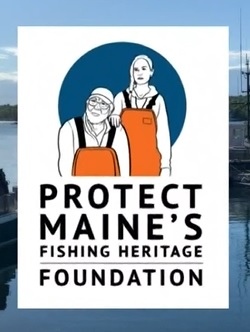
Maine is being set up to sell its coastline to Industrial Scale Aquaculture
On March 18th, a letter was sent to Gayle Zydlewski the Director of the Maine Sea Grant College Program, signed by several academics from the University of Maine, Bates College, scientists, business owners, students, members of the 2003 Aquaculture Task Force, and a former Department of Marine Resources Commissioner, calling into question whether the report, in part directed by the Maine Aquaculture Association, is simply a promotional tool for large scale industrial aquaculture. The report is more of a railroading than a roadmap, Protect Maine’s Fishing Heritage Executive Director Crystal Canney said, “The 10-year aquaculture roadmap is an economic development plan that isn’t about what’s best for Maine but what is best for large scale industrial aquaculture. >click to read< 14:45
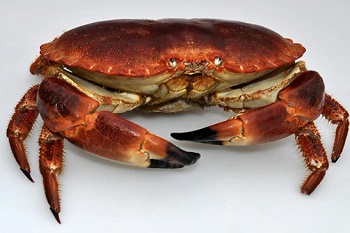
Brown Crab Behaviour Negatively Affected by Offshore Wind Farm Underwater Cables
Brown crabs are “mesmerised” by electromagnetism from underwater power cables from underwater power cables laid around Scotland for offshore wind farms,,, “Underwater cables emit an electromagnetic field. When it’s at a strength of 500 microteslas and above, which is about 5 per cent of the strength of a fridge door magnet, the crabs seem to be attracted to it and just sit still,” Alastair Lyndon of Heriot-Watt University said. “If they’re not moving, they’re not foraging for food or seeking a mate. >click to read< , with a link to the study.14:07
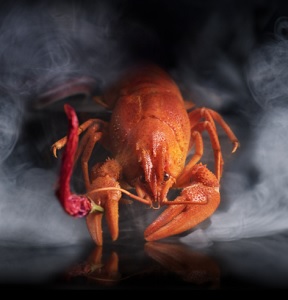
Fire it up! Can Lobsters Get High? A team of scientists tested one restaurateur’s theory
A team of scientists at the University of California San Diego have written a paper in pre-print (meaning the work has not been published or peer reviewed yet), which looks at the effects of THC, the main compound in cannabis that gets you high, on lobsters. The scientists devoted their research hours to these questions in response to a 2018 media storm, started by restaurateur Charlotte Gill. At the time, Gill, owner of Charlotte’s Legendary Lobster Pound in Southwest Harbor, Maine, wanted to find a way to cook her lobsters more humanely. So can lobsters get high? >click to read< 10:52

Scientists, First Nations team up in fresh attempt to revive struggling B.C. herring stocks
For decades, the fish were viewed as a virtually inexhaustible resource. They were canned, frozen, used as fertilizer, and even rendered into slippery goo to grease logs being skidded out of the forest. But the once coastal-wide bonanza is fizzling out. This year, most of the waters off B.C. were closed to commercial herring boats, with the only quota being allowed in the Strait of Georgia, along Canada’s southwest coast. The first collapse of the stocks happened in the 1960s, due to overfishing. They were allowed to recover but have had ups and downs in recent decades. The herring fishery in Eastern Canada has also been facing tough times. >click to read< 13:48
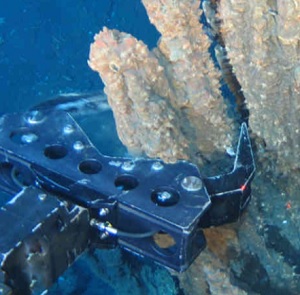
Seabed mining ban – a win for marine life, fishing and culture
The Northern Territory Government first declared a three-year temporary ban on seabed mining in March 2012 and has since extended it twice under both the Country Liberal Party (CLP) and Labor Governments. With the temporary ban due to expire in March, Territorians have made it clear that they want a permanent ban. It’s great to see today the Government listen and act on this important issue. “The Top End has some of the last healthy tropical coasts in the world. Seabed mining is like bulldozing the seafloor. It would decimate our marine life, pollute our waters, threaten our fishing and destroy places of cultural significance.” >click to read< 12:37

“This is our line in the sand,”: Facing new threats, lobstermen take hard line against right whale protections
“My administration will not allow any bureaucrat to undermine our lobster industry or our economy with foolish, unsupported, and ill-advised regulations,” Governor Janet Mills told a crowd of cheering lobstermen at a protest this summer at a protest this summer in Stonington. The backlash started shortly after a government-appointed team of scientists, fishermen, and others urged the agency to require lobstermen to reduce their buoy lines, among other measures.,, But with increasingly vocal protests across Maine’s rugged coast from rank-and-file lobstermen, the state’s leaders — including their entire congressional delegation,,, >click to read< 12:17
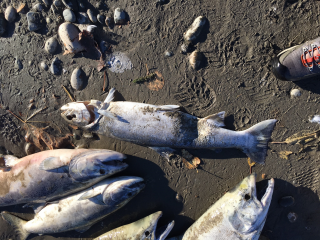
Critics say federal government is wiping out commercial pink salmon fisheries
In emails obtained by the BC Wildlife Federation, British Columbia government staff and scientists say Fisheries and Oceans Canada is burying science and misrepresenting a crisis situation to the public, risking extinction of Thompson-Chilcotin steelhead trout. In the fall of 2017, only an estimated 150 Thompson fish returned alongside just 77 to the Chilcotin down from thousands just a decade and a half ago. The email chain shows the DFO changed the wording of a public scientific document that is based on peer reviewed science. >click to read< 18:40
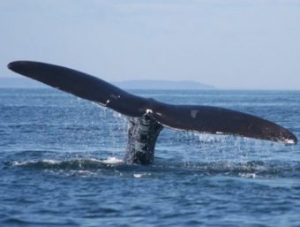
Eighteen scientists, environmentalist, blast Maine lobstermen’s stand on whale safety
“Reducing entanglement in East Coast waters of the United States is a critical part of a comprehensive strategy for right whale survival and recovery,” Scott Kraus, chief scientist for marine mammals at New England Aquarium’s Anderson Center for Ocean Life, and Mark Baumgartner, associate scientist at Woods Hole Oceanographic Institution and chairman of the North Atlantic Right Whale Consortium, said in a letter Tuesday to Sen. Susan Collins, R-Maine. >click to read< 19:44
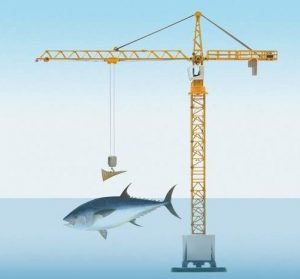
Can scientists build a blueprint for bluefin tuna?
For several years, biotech companies have been promising “clean” meat, “cell-based” meat, “cultured” meat – whatever you want to call it – as a way to enjoy the taste of chicken, pork and beef without the brutality of animal slaughter or the environmental damage of big agriculture. But what about fish? What about something as prized as buttery bluefin tuna, a delicacy that has become the forbidden fruit of the sea because of the many threats that have landed the fish on threatened and endangered species lists? Where are the Silicon Valley start-ups promising to free us from the guilt of gobbling down a finger of otoro sushi, the rich bluefin belly meat, without contributing to the decline of the fish or the decline of our own health via mercury that accumulates in the flesh of this apex predator?>click to read<07:51
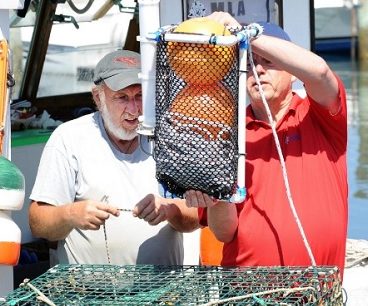
Ropes are latest flashpoint in tug of war over right whales
The lobster industry is willing to consider switching to weaker rope to protect the endangered right whale from deadly entanglements, but whale defenders say that doesn’t go far enough to help a species that can’t bear even one more death. A team of scientists, regulators, animal rights groups and fishermen met this week in Providence to review proposals,,, The team is advising the National Marine Fisheries Service on how to prevent whales from getting entangled in fishing gear as they migrate, feed and mate as they travel back and forth along the East Coast of the United States and Canada. >click to read<11:54
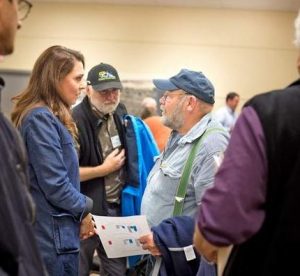
Fishermen, scientists, researchers convene to address reeling coastal communities, fisheries
Commercial fishing fleets are skeletons of their former selves and their communities, once known for their abundant natural resources and food production, are suffering from increased poverty and food insecurity. In response, about 50 state and local officials, scientists, researchers, business owners and fishermen convened Friday, Oct. 5, for a ‘Fisheries Roundtable’ discussion at the Columbia Pacific Heritage Museum in Ilwaco. They explored options to improving coastal fisheries and the communities they serve. >click to read<16:17
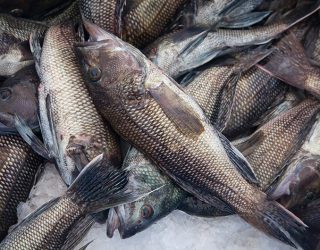
Scientists say black Sea bass behavior could be affected by offshore wind
Scientists from the Northeast Fisheries Science Center say that offshore wind energy construction could affect the behavior of Black Sea Bass. Black Sea Bass live up and down the east coast from Maine to the Gulf of Mexico, providing a significant ecological and economic importance. The fish are also attracted to structurally complex habitats, often found around rocky reefs, mussel beds, cobble and rock fields, and artificial habitats like shipwrecks. Scientists, commercial and recreational fisherman have expressed their concerns about how the sounds that come with the development of offshore wind energy overlapping with the natural habitats of Black Sea Bass. >click to read<09:37
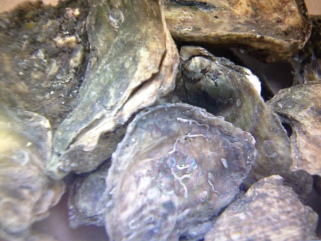
Billion Oyster Project – Environmentalists, Scientists Pledge 10 Billion Oysters By 2025, Watermen Skeptical
Drilling away, waterman Guy Spurry was working hard on Monday – not oystering – but building his boat. And in Annapolis the same morning, scientists and environmentalists say a new plan will have them working hard too. That plan – to bring 10 billion oysters to the Chesapeake Bay by the year 2025. Spurry says he’s skeptical. “It may work and it may not. It’s just a guessing game and it cost a lot of money to play these games,” Spurry said. It’s a money game that some argue needs to be played. >click to read< 18:31
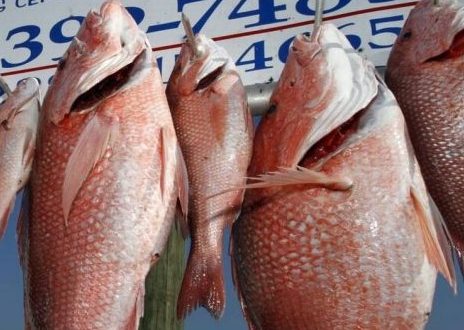
How many red snapper are actually in the Gulf? These scientists are going to find out
A team of 21 scientists from universities and state and federal agencies will attempt to answer one of the Gulf’s perplexing questions: How many red snapper are there? “American communities across the Gulf of Mexico depend on their access to, as well as the longterm sustainability of, red snapper,” said Secretary of Commerce Wilbur Ross in a press release announcing the formation of the team. “I look forward to the insights this project will provide as we study and manage this valuable resource.” The panel convened by the Mississippi-Alabama Sea Grant Consortium was awarded $9.5 million in federal funds for the project through a competitive research grant process and will receive another $2.5 million from the universities. click here to read the story 22:53

Scientists accused of scaremongering, ‘overheated claims’ with warning to humanity
A recent warning to humanity endorsed by thousands of scientists around the world includes “scaremongering” and “overheated” claims while ignoring much of the progress made in recent decades, some experts say. “It concerns me that the message from science is this doom-and-gloom scenario that just turns off about 75 per cent of people,” said Erle Ellis, an associate professor of geography and environmental systems at the University of Maryland, Baltimore County. “There’s a small percentage that loves the crisis narrative, and they just repeat it over and over to each other.” click here to read the story 10:03
Congress wants to ban the shark fin trade. These scientists think that’s a bad idea.
 Florida has a few more days until increased shark fin penalties kick in, and Congress is considering a ban that would prohibit fin sales for the entire country. But a paper co-authored by two shark researchers argues that such a ban would be destructive to shark fisheries management tactics already in place. The act of cutting off a shark’s fin and dumping its body into the water, eventually leading it to bleed to death or suffocate, has been illegal in the U.S. since 2000. Senate Bill 884 increases the fines for those who cut the fins off sharks while on the water, or return to shore with a shark’s fin separated from its body. While Mote Marine Laboratory’s Robert Hueter supported Florida’s new law imposing stricter fines for finning, he said Congress aims to solve a problem that doesn’t exist in the U.S. click here to read the story 08:33
Florida has a few more days until increased shark fin penalties kick in, and Congress is considering a ban that would prohibit fin sales for the entire country. But a paper co-authored by two shark researchers argues that such a ban would be destructive to shark fisheries management tactics already in place. The act of cutting off a shark’s fin and dumping its body into the water, eventually leading it to bleed to death or suffocate, has been illegal in the U.S. since 2000. Senate Bill 884 increases the fines for those who cut the fins off sharks while on the water, or return to shore with a shark’s fin separated from its body. While Mote Marine Laboratory’s Robert Hueter supported Florida’s new law imposing stricter fines for finning, he said Congress aims to solve a problem that doesn’t exist in the U.S. click here to read the story 08:33
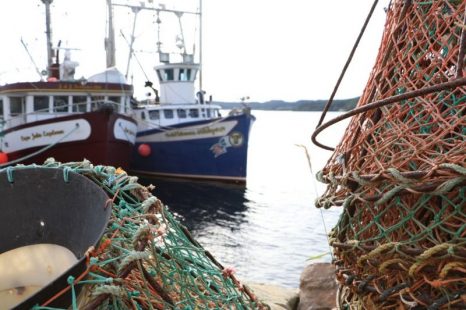
Newfoundland and Labrador Fishermen don’t agree that crab, shrimp stocks are as bad as scientists say
The province’s fishery appears to be on the brink of a sea change. News over the past couple of months of continually declining snow crab and northern shrimp stocks in waters off Newfoundland and Labrador’s coasts have sent waves of concern washing over the fishing industry. The expected cuts this spring to crab and shrimp quotas have fisherman all around the province on edge. And there’s little else to fill in the gap — the northern cod stocks, while showing signs of strong growth in recent years, are still not ready for a major commercial fishing effort. Lying in the balance are huge investments in vessels and fishing gear, work for boat crews and plants, and the survival of rural areas of the province. But while scientific stock assessments of crab and shrimp reveal a dismal picture, many fishermen are not so sure that picture is accurate. In fact, many say they are seeing things a bit differently out on the water, and see some hope for the fishery of the future if fishermen are willing to branch out into other potential commercial species. click here to read the story 08:50
Scientists don’t need to do a better job of explaining themselves to fishermen — they need to do a better job of listening to them.
 There’s currently a public spotlight on the plight faced by the province’s inshore fishers, due in part to the courageous 11-day hunger strike of FISH-NL Vice-President Richard Gillett that ended Sunday with his hospitalization, and to the increasing militancy on the part of desperate fishers, who have stormed, occupied, and barricaded Department of Fisheries and Oceans (DFO) offices, burned their gear in public protest, and spoken out in myriad ways about the crisis they and their communities face.,, Their protests have provoked a range of responses, some of which are incredibly counter-productive. For instance, the suggestion that scientists need to do a better job of explaining their science to fishers.,, The implication is that if fishers actually understood the science, they would stop protesting — which misses the entire point of these protests on two counts. click here to read the article 17:45
There’s currently a public spotlight on the plight faced by the province’s inshore fishers, due in part to the courageous 11-day hunger strike of FISH-NL Vice-President Richard Gillett that ended Sunday with his hospitalization, and to the increasing militancy on the part of desperate fishers, who have stormed, occupied, and barricaded Department of Fisheries and Oceans (DFO) offices, burned their gear in public protest, and spoken out in myriad ways about the crisis they and their communities face.,, Their protests have provoked a range of responses, some of which are incredibly counter-productive. For instance, the suggestion that scientists need to do a better job of explaining their science to fishers.,, The implication is that if fishers actually understood the science, they would stop protesting — which misses the entire point of these protests on two counts. click here to read the article 17:45
Fisheries Minister Steve Crocker DFO should listen to harvesters seeing different catch rates than DFO scientists
 Not all Newfoundland and Labrador fish harvesters are witnessing such a dramatic decline in shellfish stocks, according to provincial Fisheries Minister Steve Crocker, who said the federal government should listen to local fishermen when deciding upcoming quotas. Local fish harvesters are seeing catch rates that don’t match up with the analysis produced by DFO scientists, according to Crocker. That analysis showed major declines in shrimp and snow crab biomass, and hinted at a dire situation for fish harvesters who rely on those stocks to make a living. Crocker said he would be speaking to federal Fisheries Minister Dominic Leblanc this week, and would urge him to listen to local fish harvesters. Read the story here 10:08
Not all Newfoundland and Labrador fish harvesters are witnessing such a dramatic decline in shellfish stocks, according to provincial Fisheries Minister Steve Crocker, who said the federal government should listen to local fishermen when deciding upcoming quotas. Local fish harvesters are seeing catch rates that don’t match up with the analysis produced by DFO scientists, according to Crocker. That analysis showed major declines in shrimp and snow crab biomass, and hinted at a dire situation for fish harvesters who rely on those stocks to make a living. Crocker said he would be speaking to federal Fisheries Minister Dominic Leblanc this week, and would urge him to listen to local fish harvesters. Read the story here 10:08







